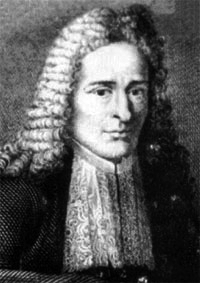|
Accademia Galileiana
The Accademia Galileiana, or "Galilean academy", is a learned society in the city of Padua in Italy. The full name of the society is , "Galilean academy of science, letters and the arts in Padova". It was founded as the in Padua in 1599, on the initiative of a Venetian nobleman, Federico Cornaro. The original members were professors in the University of Padua such as professor Georgios Kalafatis; one of its original members was Galileo Galilei. In 1779 the academy merged with the Accademia di Arte Agraria (founded in 1769) and became the Accademia di Scienze Lettere e Arti; in 1949 it became the Accademia Patavina di Scienze, Lettere ed Arti; its name was changed to Accademia Galileiana di Scienze, Lettere ed Arti in Padova in 1997, in honor of Galileo. The academy is lodged in the Carraresi Palace in Padua. The "Ricovrati" The name "ricovrati" literally means "sheltered" and the academy took its name from a line from Boethius, "Bipatens animis asylum" (Latin: "a sanctuary ... [...More Info...] [...Related Items...] OR: [Wikipedia] [Google] [Baidu] |
Antonio Vallisneri
Antonio Vallisneri ( Trassilico,3 May 1661 – Padua, 18 January 1730), also rendered as ''Antonio Vallisnieri'', was an Italian medical scientist, physician and naturalist. Life Vallisneri was born in Trassilico, a small village in Garfagnana, and graduated in medicine in 1684, in Reggio Emilia, under the guidance of Marcello Malpighi. A grand-uncle was the physician Cesare Magati. He studied at Bologna, Venice, Padua and Parma and held the chairs of Practical Medicine first and Theoretical Medicine later at the University of Padua between 1700 and his death. Influenced by famous thinkers such as Leibniz and Conti he belonged to the Galilean school of experimental scientists. He worked in biology, botany, veterinary medicine, hydrology and the newly born science geology. Vallisneri died in Padua in 1730. Importance He is known for being one of the first researchers in medicine to have proposed abandoning the Aristotelian theories for an experimental approach based on the sc ... [...More Info...] [...Related Items...] OR: [Wikipedia] [Google] [Baidu] |
French Wikipedia
The French Wikipedia (french: Wikipédia en français) is the French-language edition of Wikipedia, the free online encyclopedia. This edition was started on 23 March 2001, two months after the official creation of Wikipedia. It has articles as of , making it the -largest Wikipedia overall, after the English-, Cebuano-, Swedish- and German-language editions, the largest Wikipedia edition in a Romance language. It has the third-most edits, and ranks 6th in terms of depth among Wikipedias. It was also the third edition, after the English Wikipedia and German Wikipedia, to exceed 1 million articles: this occurred on 23 September 2010. In April 2016, the project had 4657 active editors who made at least five edits in that month. In 2008, the French encyclopaedia '' Quid'' cancelled its 2008 edition, citing falling sales on competition from the French edition of Wikipedia. As of , there are users, admins and files on the French Wikipedia. On 2 December 2014, the French ... [...More Info...] [...Related Items...] OR: [Wikipedia] [Google] [Baidu] |
Italian Wikipedia
The Italian Wikipedia ( it, Wikipedia in italiano) is the Italian-language edition of Wikipedia. This edition was created on May 11, 2001 and first edited on June 11, 2001. As of , , it has articles and more than registered accounts. It is the -largest Wikipedia by the number of articles (after the English, Swedish, German, Dutch, French, Cebuano, Russian, and Spanish editions). History As early as March 2001, Jimmy Wales, the creator and co-founder of the original English language Wikipedia, had proposed the creation of parallel Wikipedia projects in other languages. The Italian-language version was among the first ones to be created, in May 2001. The original URL was , while the standardized ISO 639 address became active a few days later. Afterwards, Wikipedia sites switched their domains from to . The very first pages (circa five hundred) were simply untranslated copies from the English-language Wikipedia; the first edits were made from June 11, 2001, onwards. One of t ... [...More Info...] [...Related Items...] OR: [Wikipedia] [Google] [Baidu] |



